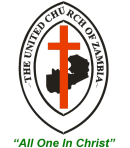16-19 SEPTEMBER 2015, HONG KONG, Day 1.
I left Livingstone on Tuesday, 15 September 2015 for the 2 hour flight to Jo’burg and the further 12h to Hong Kong. Arriving at 1300h on Wednesday I shared the courtesy bus to our hotel and conference centre in the New Territories with a bishop from South India and a Reverend from Singapore, both heading to the same conference . My first visit to Asia they asked? This was not the real Asia I was told!
We were bussed along the North Lantau Expressway, winding through the overdeveloped coastal strip with its beaches and harbours, its glass, steel and concrete towering skyscrapers, offices and flats, like vertical streets, with their backs to the still surprisingly green and steep hills. We crossed two modern suspension bridges with the hazy built-up areas of Kowloon and Hong Kong Island in the distance to the right. We arrived at the Gold Coast Hotel in the New Territories, half an hour later. While waiting for the room I went down to the beach, famous for its school of white dolphins, and strolled passed the ubiquitous beach-side cafes, up-market and seafood restaurants and the moored luxury yachts at the marina.
I next crossed the road and walked through the open gates to the famous Crossroads Foundation, a Christian organisation, with its shabby refugee flats, fair-trade centre and cafe and other income-generating projects to help drug-addicts and other needy and disadvantaged people in Hong Kong and elsewhere in the world . A stark contrast to the gated community opposite, to which the hotel, beach and residences all belong, there is also an adobe-style shopping piazza with international gourmet restaurants, luxury boutiques and a well-stocked supermarket.
At 19h we were invited to an 8 course welcoming banquet with a wide range of Chinese delicacies seafood, chicken, fish, noodles and rice finishing with a mango cream pudding and all washed down with regularly topped-up cups of Chinese tea.
Next morning I met up with the Synod Bishop who had arrived earlier for a Council for World Mission Conference for Church leaders. Before the first session, John Proctor led the devotion on the promise, reality and fulfilment of the Holy Spirit. At Table 5 we had Bishop Bernard Siai from PNG, Lian Kip from Myanmar, Wayne Matheson from NZ, Bishop Michael Roy from Bangladesh, Roshanna Gillis from Guyana and Reupena and Dione Alo from American Samoa. Our prayers went with Reupena and Dione as they left early to return for Reupena’s sister’s funeral.
We were welcomed to Hong Kong by the Rev Lee Chin Chee an 83 year old senior missionary she encouraged us to persevere, refuse not, fear not and embrace hope and go the tired, the miserable and helpless, especially locally and engage and work with them.
Rev Wayne Hawkins delivered a presentation on Partners in Mission, a variety of approaches with short, medium and long-term placements as forms of mutual accompaniments. CWM hoped to open an online data base advertising opportunities and then match people to them. This would share expertise and deepen and expand network and be a new expression of Church not just mission maintenance, but working ecumenically where possible and also with the possibility of responding to crisis
The Keynote Speech was given by Professor Vuyani Vellem that Mission was the anticipation and provisional realisation of God’s reign, refusing the status quo and being transformed by the Holy Spirit. Mission is a partnership, he said, offering the economy of life to the living dead. The theology of liberation is found at the cross of Christ in the squalor of the zinc-roofed forests, amongst the stranger and foreigner, those excluded from high walls and gates, travelling along the Jericho Road.
No single Church has a monopoly of the truth or gifts so we evangelise everywhere to everywhere on the edges and frontiers always reforming and transforming. Our spiritual engagement requires solidarity and continuous learning otherwise hospitality can lead to hostility. The Gate of No Return in Accra is a symbol of faith, economy, sexuality and modernity.
Africa helps show us what it is to be human and to share God’s resources as is stated by the Accra Confession. Equality is not the same as justice but equity is. Not all theology is life, real life is life in abundance, as God promises, through Jesus Christ and not a living death as the world gives. The Prosperity Gospel and World Bank Dogma that sees congregants as clients and the bottom line as profit are modern heresies.
Sharing the Good News, subversively and in powerlessness, in honour of the Cross is where we find salvation. The 21st Century is hardening with its neo-liberalism and some in the Church to their shame speak this as the language of God. Our humanness, made in the image of God, is being destroyed and our consciousness killed in these economic drone-attacks, bringing the death of spirituality to the living dead. We need to learn not teach; the Cross of Jesus is a dangerous memory because beneath the Cross, we gather for partnership in mission. We minister, as those who have, to those who have not. We work not on behalf or for another human being but with them, bringing justice for example in fair trade, environmentalism and ethical investment in the struggle for life against politics, military power, culture, globalisation and consumerism.
Our table was then tasked to discuss how donor-recipient model of mission could be resisted and renewed as partnership in mission. In the past Mission was predominantly North to South, top- down and needs were decided for the donor. Real partnership is a mutual commitment for life and to life and a sharing of the Gospel through sacrifice and involving justice and equity. It is a holistic submissive giving, as Jesus gave, sharing the economy of life, life in abundance with others.
Partnership means solidarity and sharing, growing together and giving as you receive and receiving as you give. There is a mutual engagement, a change of mindset and attitude where both parties learn rather than teach and where both partners are transformed. The blessing is that both are donors and recipients and committed to each other.
Neo-liberalism can be resisted by a dynamic response and by a change of attitude. Some were uncomfortable as receiving more materially than they contribute, however, this begged the question of who are the real givers and who are the receivers.
Mission is one mission to one world and a redistribution of the resources is necessary to do it; a contribution to the ministry of working together and not a hand-out. Manyar gave NZ a gift in response to the Christchurch earthquake. This came from the bottom-up prompted by the Holy Spirit and given from the heart.
In the Pacific the US Church sent carpenters, plumbers and electricians to help rebuild houses after the Tsunami. Samoa had also received 3 missionary teachers to help in their High Schools. This has helped people there to see mission as not just the sending out of clergy, but that all, both clergy and laity have something to offer.
The General Secretary Rev. Colin Cowan next discussed the Tenure of Service. In 2014 it had been decided that the maximum term of service for new recruits was to be 9 years. For those already on the field some flexibility could be shown but this required negotiation and each case being considered on its merit. In line with partnership and mission everywhere to everywhere, it should reduce dependency and be part of the mutual accompaniment of living, learning, sharing people, growing together and transferring skills 20% of the annual budget was devoted to sharing people. Support for implementation was needed from partner churches; consultation should have take place sooner rather than later and involve both sending and receiving churches. PIM should be received as ‘one of our own’. At the end of contract to ensure closure the PIM needed to return home.
Succession planning and capacity building is the responsibility of the receiving church in consultation with the PIM. The Capacity Development Fund was available to help facilitate this.
The session closed with Celine Hoiore from Tahiti leading the evening prayers. She compared our fellowship, cooperation and partnership to the successful paddling of a Pacific canoe and we were taught a paddling song, used to keep time and steer and paddle together
The African region then met to discuss how they could be more effective in speaking with one voice and coordinating working for common causes at various CWM fora.
 UCZ Synod United Church of Zambia
UCZ Synod United Church of Zambia



